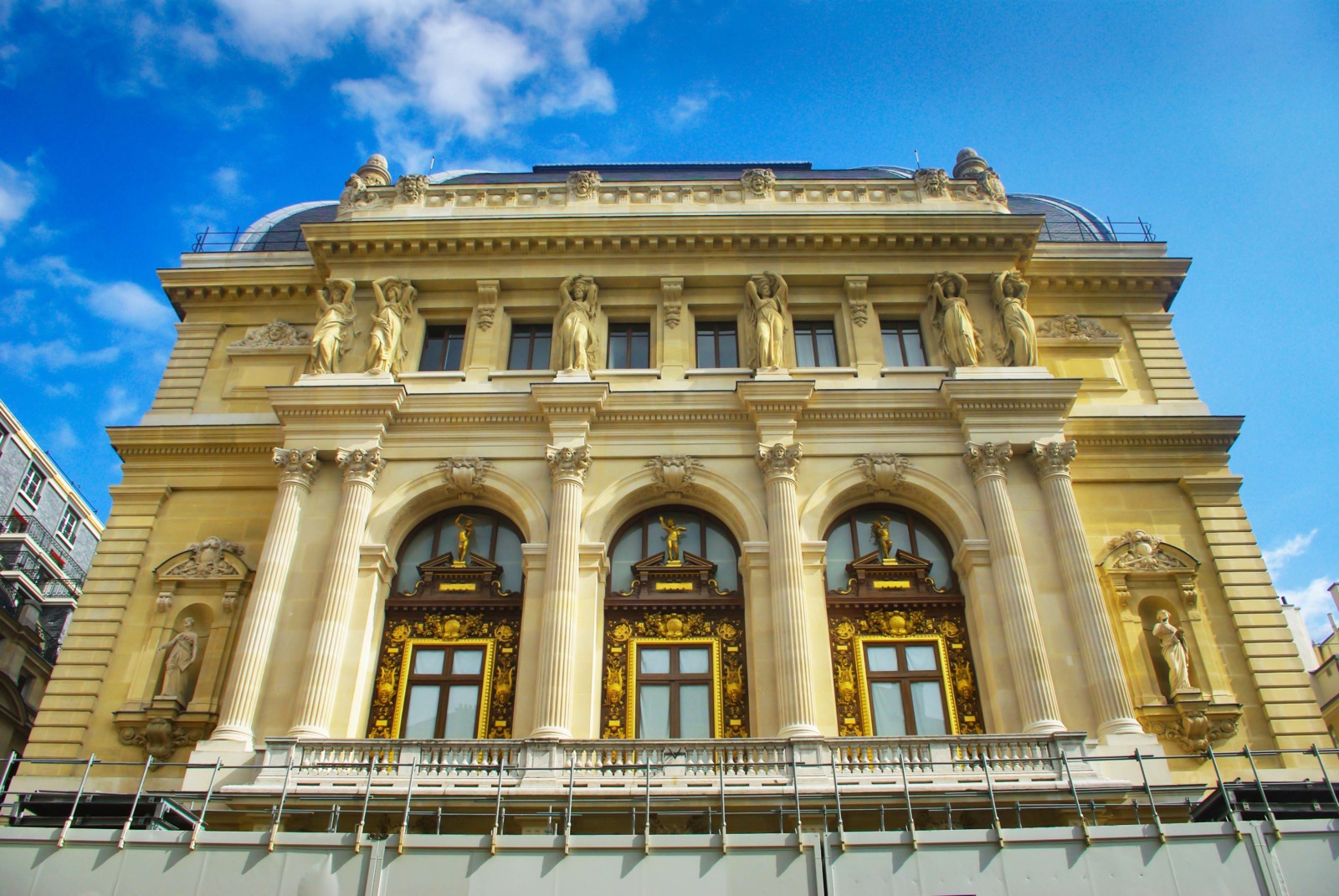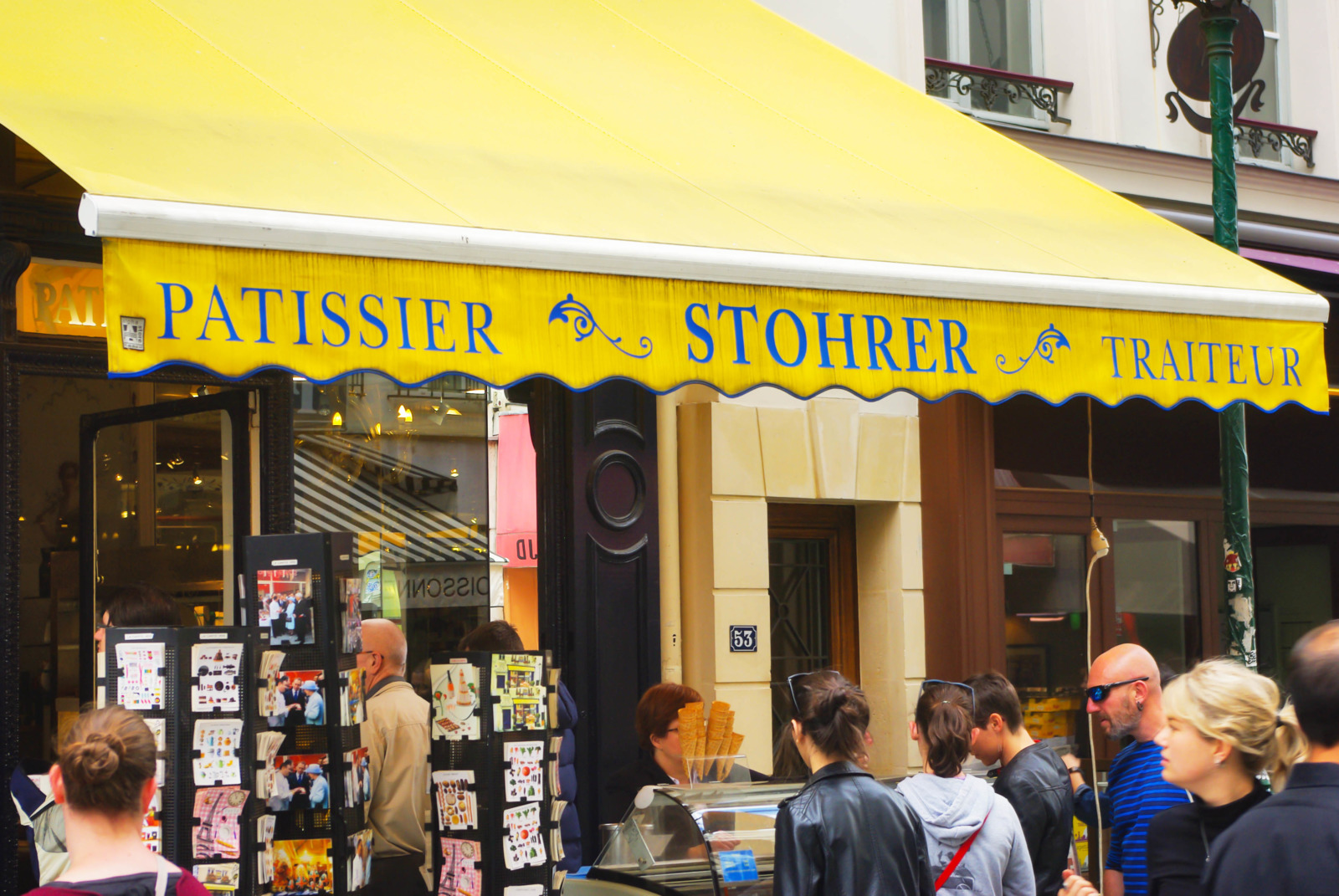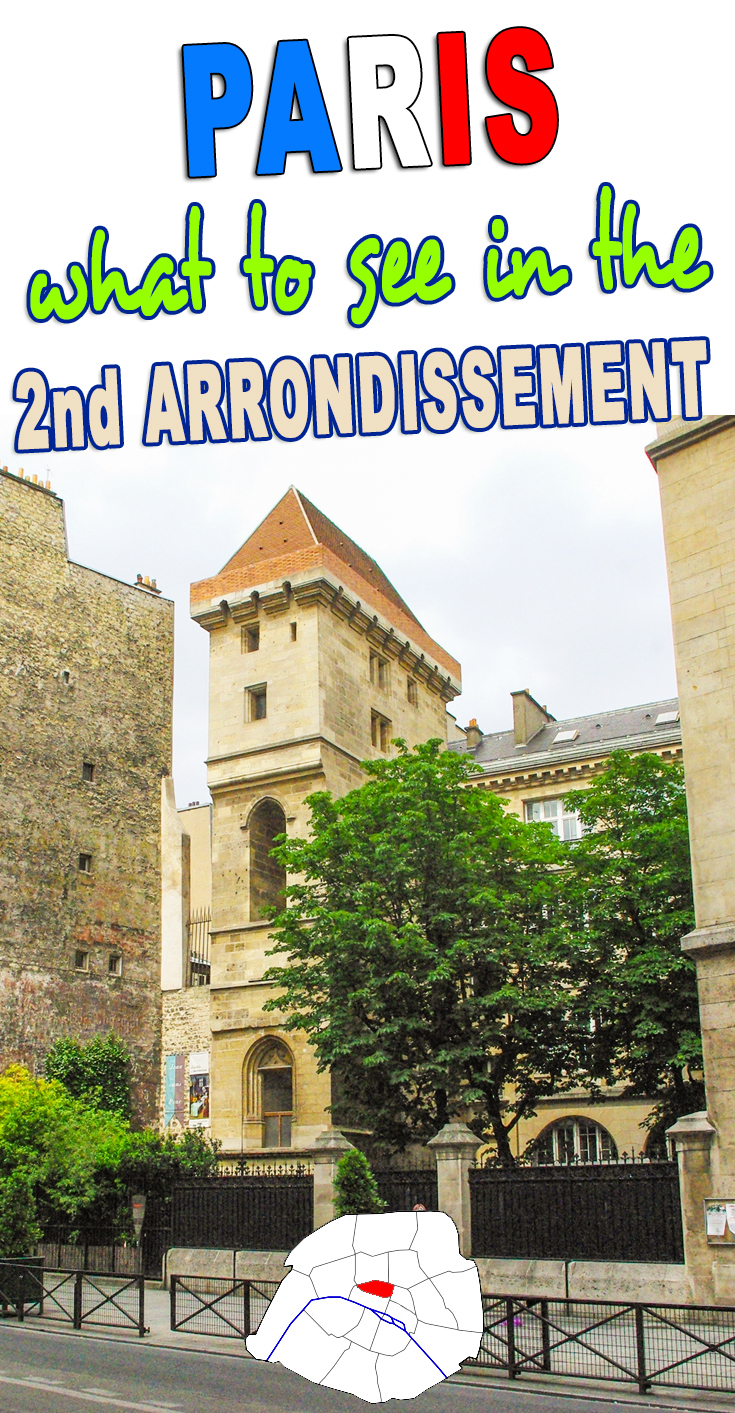Although situated in the heart of Paris, the Second Arrondissement is arguably one of the least visited districts of the French capital. The reason for this is that it lacks major monuments and famous landmarks. However, it should not be so for the curious visitor looking for offbeat places in Paris. Let’s look closer at the historic home to the Stock Exchange (la Bourse) and the covered Passages with their vintage looks.
A few words about the 2nd arrondissement
![2nd arrondissement of Paris © ThePromenader - licence [CC BY-SA 3.0] from Wikimedia Commons](https://frenchmoments.eu/wp-content/uploads/2014/10/Paris_2e_arr_jms.gif)
The Second Arrondissement of Paris (le deuxième arrondissement) is situated on the right bank of River Seine between the Grands Boulevards and the northern limits of the First arrt.

It is the smallest arrondissement of Paris, covering an area of 0.992 km2 with a population of 21,042 (2017).
A major business district
The 2nd arrt. is home to an important business district centred around the Opéra Garnier, second to France after La Défense.
The former Paris Bourse (stock exchange) is in its centre and occupies the Palais Brongniart, a rectangular neoclassical edifice completed in 1826.

Since 1998, no more financial operations have been operated from the Palais Brongniart. The building is now a venue for conferences, congresses and exhibitions.
The Paris Bourse is surrounded by a large number of bank headquarters.

From textile to the covered passages
The 2nd arrt. is also well-known for the textile trade known as the Sentier.
Several covered shopping arcades from the 19th century – the Passages – were the precursors to the modern shopping malls: Passage des Panoramas, Galerie Vivienne, Galerie Colbert, Passage Choiseul…

A unique food street
The shopping street of Rue Montorgueil straddles the First and Second arrondissements. Lined with restaurants, cafés, boulangeries, poissonneries, fromageries, fleuristes, cavistes and épiceries fines, the street is a great place to enjoy daily shopping the Parisian way.

Medieval vestiges in Paris
On Rue Étienne Marcel, the defensive tower of Tour Jean Sans Peur (John the Fearless) is the last remaining vestige of the former Hôtel de Bourgogne, built between 1409 and 1411 by Jean sans Peur, Duke of Burgundy.

The least green arrondissement in Paris!
The urban planning policy of Haussmann (mid-19th C) called for four public gardens per arrondissement. This objective was not reached in the 2nd arrondissement due to its small size and the lack of changes. It is thus the least endowed with green spaces in Paris and contains only two public gardens: Square Louvois and Square Jacques-Bidault.
During your visit, however, notice the beautiful green wall (or vertical garden) at the intersection of Rue d’Aboukir and Rue des Petits Carreaux.

And despite the lack of great parks and gardens, the Second arrondissement can be full of surprises, look at this flower-decked façade in Rue du Quatre Septembre:

Where to stay in the Second arrondissement?

Hotels in Paris vary from stunning luxurious places like the Westminster Hotel and the Park Hyatt to much simpler hotels in charming older parts of the city. However, due to the central location of the 2nd arrondissement, you will find the prices of all types of accommodation relatively high. Depending on your budget, you might want to find cheaper accommodation further away from the hypercentre of Paris!
Click here for a list of accommodations in the centre of Paris, or check out the map below:
Public institutions and organisations in the 2nd arrt.
Many public institutions have their seat in the 2nd arrondissement:
- the AMF – Autorité des Marchés Financiers (Financial Markets Authority), which is the stock market regulator in France.
- the former headquarters of the Bibliothèque nationale de France (site Richelieu)
- the AFP (Agence France Presse) on Place de la Bourse
- the Parisian headquarters of Le Crédit Lyonnais (LCL) bank.
Main places of interest in the 2nd arrondissement

Tourists usually bypass the 2nd arrondissement as it does not contain many famous landmarks and monuments. However, it does connect the touristic 1st arrondissement to the shopping precinct of Boulevard Haussmann.
The main places of interest in the 2nd arrondissement are:
- Rue de la Paix links the Place Vendôme to the Opéra Garnier and includes mainly high jewellery houses such as Cartier, Van Cleef & Arpels, Fred, or Mellerio, luxury stores, large hotels and palaces such as the Westminster Hotel and the Park Hyatt.
- Palais Brongniart (Paris Stock Exchange)
- Opéra-Comique, Place Boïeldieu
- Place des Victoires, opened in 1685 and dedicated to Louis XIV. It is one of the five royal squares of Paris, with the Place des Vosges, the Place Dauphine, the Place Vendôme and the Place de la Concorde.
- the semi-pedestrian food street of Rue Montorgueil
- Tour Jean Sans Peur (Tower of John the Fearless). A medieval tower from the early 15th century.
- Grand Rex cinema. An amazing Art Deco building. Its main auditorium is the biggest cinema theatre in Europe.
- Rue des Colonnes. It is one of the rare examples of construction from the French Revolution time with its Greek Revival appearance, pavements and columns.
- Rue des degrés. The street is entirely made up of a staircase that starts from the rue de Cléry and goes up to the rue Beauregard a few meters from the Porte Saint-Denis. With only 5.75 m long, the Rue des Degrés is the shortest in Paris; it is also 3.30 meters wide.
Photos of the Second Arrondissement









The covered passages in the 2nd arrondissement
- Galerie Colbert
- Galerie Vivienne
- Passage des Princes
- Passage de Choiseul and Passage Sainte-Anne
- The network of Passage des Panoramas, Galerie des Variétés, Galerie Saint-Marc and Galerie Montmartre
- Passage du Caire and Passage du Ponceau
- Passage du Grand Cerf and Passage Bourg l’Abbé



Churches to see in the 2nd arrondissement
- Basilique Notre-Dame des Victoires (Baroque, inauguration in 1740),
- Notre-Dame de Bonne Nouvelle (Neo-classical, inauguration in 1830)


Pin it for later!






Pierre, thank you for this interesting overview of the 2nd arrondissement. I’m looking forward to strolling through the Passages – maybe on a rainy day – on on Rue Montorgueil on a sunny day!
You’re welcome Ellen… hopefully, it will rain at least for one day when you are in Paris, it would be a shame to miss les passages couverts! 😅
Great reportage–thanks!
In your picture of the Tour de Jean-sans-Peur, you’ll notice the blank wall of the Haussmannian building at 22, rue Etienne-Marcel. What I think is that they built it in such a way as they expected to demolish the vestiges of the Hôtel de Bourgogne and erect a similar Haussmannian building on the premises!
I always liked the rue des Colonnes because it reminded me of the bastides in the Southwest with their arcaded central plazas protecting pedestrians from both sun and rain: too bad there aren’t more streets with arcades in Paris!
I never knew about the rue [or passage] de Degrés: strange it would have a name when there no doors on it.
I think that Stohrer is the oldest surviving boulangerie-pâtissserie in Paris. There was one, the Boulangerie Pâtisserie Au Grand Richelieu at 51, rue de Richelieu, founded in 1810, which was the oldest until it closed in 2012. A Norman, Claude Esnault, ran it from 1969 until its forced closing–the landlord doubled the rent.
Thank you Ronald for all your facts and anecdotes! The second arrondissement is indeed full of surprises! 🙂